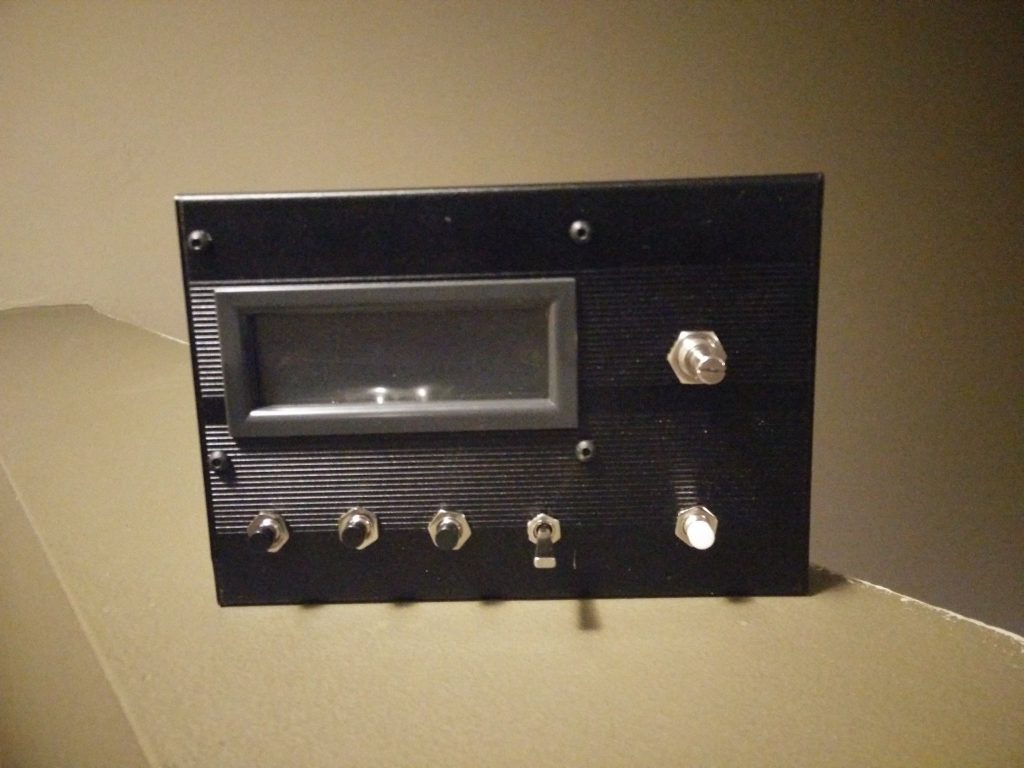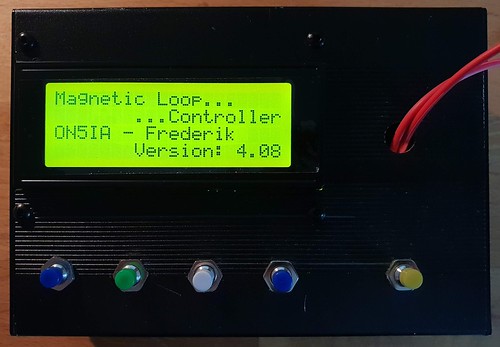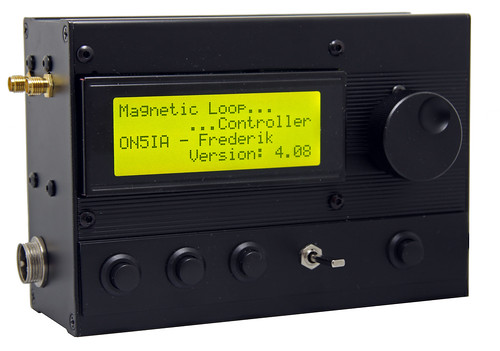When our first batch of automatic magnetic loop tuners was finished, I started looking for another enclosure. One that was sturdier, better looking and cheaper. I ended up looking on AliExpress and found this aluminium box. After some measuring, drilling and filing I test fitted the components.

I quickly understood this enclosure would be a very tight fit. Using the bulkier rotary encoder together with the larger tin box for the SWR bridge was not possible. In parallel, we started working on our second batch of automatic magnetic loop tuners, and I needed the buttons and screen bezel to finish another tuner. Having no spare screen bezel any more and in need of extra internal space, I ditched the screen bezel idea and let the LCD come out of the enclosure. It wasn’t even looking that bad.
Yet, the little extra space I gained on the inside of the enclosure was still not enough to fit the SWR bridge in it’s RF shielded tin box. I had to go and find a smaller box, which I did on a local ham fair.
The SO-239 connectors were also replaced by SMA connectors. These are also a lot easier to mount as you only need to drill one round hole.
When I made the A4988/DRV8825 version of the automatic magnetic loop tuner PCB, I made it exactly 100mm wide. This way it fits nicely in the PCB slot in the aluminium box. When the PCB is positioned completely to the left against the tin box of the SWR bridge, there is plenty of room for the rotary encoder on the right. The rotary encoder is positioned between the power button and the fuse and serial connector.

When the box is closed and the power is switched on it looks very nice 😉
The knob on the rotary encoder is a full aluminium knob which you can find here on AliExpress.





I really like how you did this,
The SMA looks like a good fit.
I got so I can compile the software
I need to pick this project back up and start looking for a PCB for it. Thanks for sharing
NE7LS
Hello Lars,
Thank you for the compliments.
Let me know if I can help you.
73 de ON5IA
This is a great use of DIY technologies to solve a common ham antenna limitation – congratulations!
Hi Mark,
It sure is! Also a big thank you to Loftur E. Jónasson – TF3LJ / VE2LJX, who designed the tuner and it’s source code.
I’ve had lot’s of fun already building this tuner together with my fellow OM’s not to mention the many contacts I’ve made with the magnetic loops.